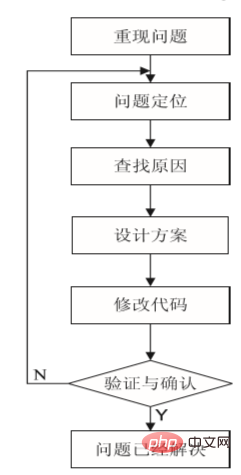什么是网络协议?网络协议指的是计算机网络中互相通信的对等实体之间交换信息时所必须遵守的规则的集合,是网络上所有设备(网络服务器、计算机及交换机、路由器、防火墙等)之间通......
MySQL 数据库碎片优化、整理方法详细步骤图解教程
起因:查看线上数据库中Table Information时发现有一个日志表数据大小和索引大小有915M,但实际行数只有92行。该表需要频繁插入并且会定时去删掉旧的记录。表类型为Myisam,已建立一个索引,所以应该是产生了大量碎片,使用 Optimize table 表名 优化后大小变为2.19M,少了很多, 同时可以看出该表上的索引建的多余,因为插入操作比查询操作要多很多,而且查询不多,查询的数据量也一般比较小。

借此延伸下MYSQL中Myisam、InnoDB碎片优化方式:
Myisam清理碎片
OPTIMIZE TABLE table_name
InnoDB碎片优化
if you frequently delete rows (or update rows with variable-length data types), you can end up with a lot of wasted space in your data file(s), similar to filesystem fragmentation.
If you’re not using the innodb_file_per_table option, the only thing you can do about it is export and import the database, a time-and-disk-intensive procedure.
But if you are using innodb_file_per_table, you can identify and reclaim this space!
Prior to 5.1.21, the free space counter is available from the table_comment column of information_schema.tables. Here is some SQL to identify tables with at least 100M (actually 97.65M) of free space:
SELECT table_schema, table_name, table_comment FROM information_schema.tables WHERE engine LIKE ‘InnoDB’ AND table_comment RLIKE ‘InnoDB free: ([0-9]{6,}).*‘;
Starting with 5.1.21, this was moved to the data_free column (a much more appropriate place):
SELECT table_schema, table_name, data_free/1024/1024 AS data_free_MB FROM information_schema.tables WHERE engine LIKE ‘InnoDB’ AND data_free > 100*1024*1024;
You can reclaim the lost space by rebuilding the table. The best way to do this is using ‘alter table’ without actually changing anything:
ALTER TABLE foo ENGINE=InnoDB;
This is what MySQL does behind the scenes if you run ‘optimize table’ on an InnoDB table. It will result in a read lock, but not a full table lock. How long it takes is completely dependent on the amount of data in the table (but not the size of the data file). If you have a table with a high volume of deletes or updates, you may want to run this monthly, or even weekly.
什么是mysql碎片?怎样知道表的碎片有多大呢?
简单的说,删除数据必然会在数据文件中造成不连续的空白空间,而当插入数据时,这些空白空间则会被利用起来.于是造成了数据的存储位置不连续,以及物理存储顺序与理论上的排序顺序不同,这种是数据碎片.实际上数据碎片分为两种,一种是单行数据碎片,另一种是多行数据碎片.前者的意思就是一行数据,被分成N个片段,存储在N个位置.后者的就是多行数据并未按照逻辑上的顺序排列.当有大量的删除和插入操作时,必然会产生很多未使用的空白空间,这些空间就是多出来的额外空间.索引也是文件数据,所以也会产生索引碎片,理由同上,大概就是顺序紊乱的问题.Engine 不同,OPTIMIZE 的操作也不一样的,MyISAM 因为索引和数据是分开的,所以 OPTIMIZE 可以整理数据文件,并重排索引.
OPTIMIZE 操作会暂时锁住表,而且数据量越大,耗费的时间也越长,它毕竟不是简单查询操作.所以把 Optimize 命令放在程序中是不妥当的,不管设置的命中率多低,当访问量增大的时候,整体命中率也会上升,这样肯定会对程序的运行效率造成很大影响.比较好的方式就是做个 Script,定期检查mysql中 information_schema.TABLES字段,查看 DATA_FREE 字段,大于0话,就表示有碎片.脚本多长时间运行一次,可以根据实际情况来定,比如每周跑一次.
我们在使用MySQL的时候,每当我们从表中删除一个数据的时候,都会让这段空间滞空。如果在短时间内删除大量的数据,那么这些留出来的空间比数据库中保留的数据所使用的空间还要大。虽然在mysql插入新的数据时候,mysql会尽最大的可能使用这些空间,但是依然是无法全部重新利用的,所以学会mysql碎片清理是很有用处的
mysql> select table_schema, table_name, data_free, engine from information_schema.tables where table_schema not in ('information_schema', 'mysql') and data_free > 0;
+--------------+-----------------------+-----------+--------+
| table_schema | table_name | data_free | engine |
+--------------+-----------------------+-----------+--------+
| BK | comments | 9437184 | InnoDB |
| BK | historypwd | 9437184 | InnoDB |
| ss | app_admin_log | 434 | MyISAM |
| ss | app_article | 4434 | MyISAM |
|ss | app_article_category | 43420 | MyISAM |
| ss | app_config | 3324 | MyISAM |
| ss | app_convert_key | 1132 | MyISAM |
如上图所示中,data_free是指碎片的空间。
你可以通过这两条语句对数据库进行碎片清理:
Optimize table ss.app_article; //这种方式只支持MyIsam引擎
INNODB使用 ALTER TABLE table.name EMGINE=’InnoDB’; //使用之前最好对数据备份
学会数据库碎片的处理可以大大的增加数据库利用的空间,现在很多的空间上都限定mysql的数据空间大小,如果超过的话需要加收费用,所以使用碎片处理可以减少费用的支出。
标签: MySQL数据库
相关文章
- 详细阅读
-
区块链核心技术体系架构的网络层主要包括什么详细阅读
区块链核心技术体系架构的网络层主要包括:A、网络管理B、P2P网络C、HTD、发现节点E、心跳服务网络管理网络管理包括对硬件、软件和人力的使用、综合与协调,以便对网络资源进行监视......
2022-04-28 328 区块链核心技术
-
软件调试的目的是什么详细阅读

软件调试的目的是:改正错误。软件调试的概念软件调试是泛指重现软件缺陷问题,定位和查找问题根源,最终解决问题的过程。软件调试通常有如下两种不同的定义:定义1:软件调试是为了......
2022-04-28 359 软件调试
- 详细阅读
- 详细阅读
